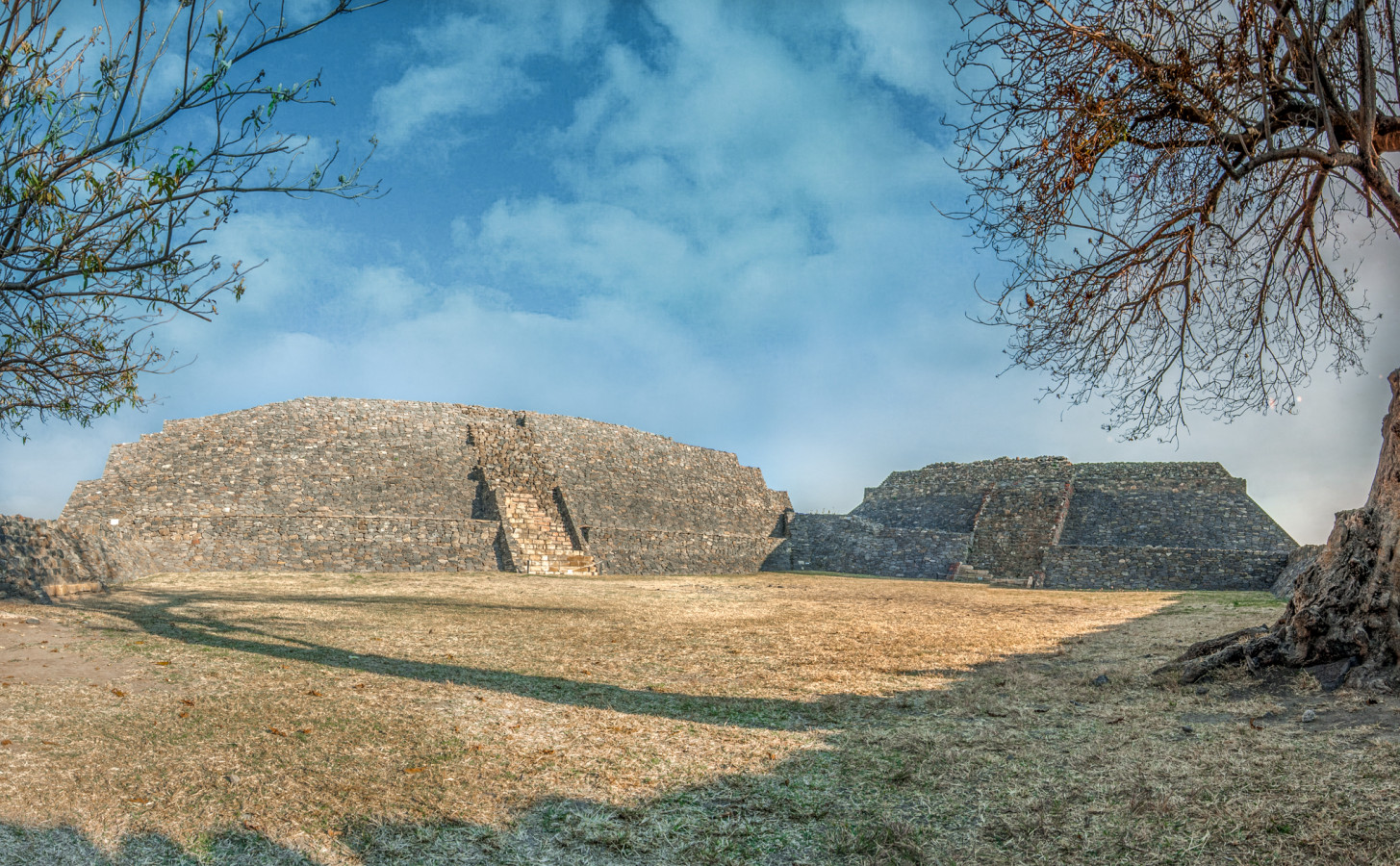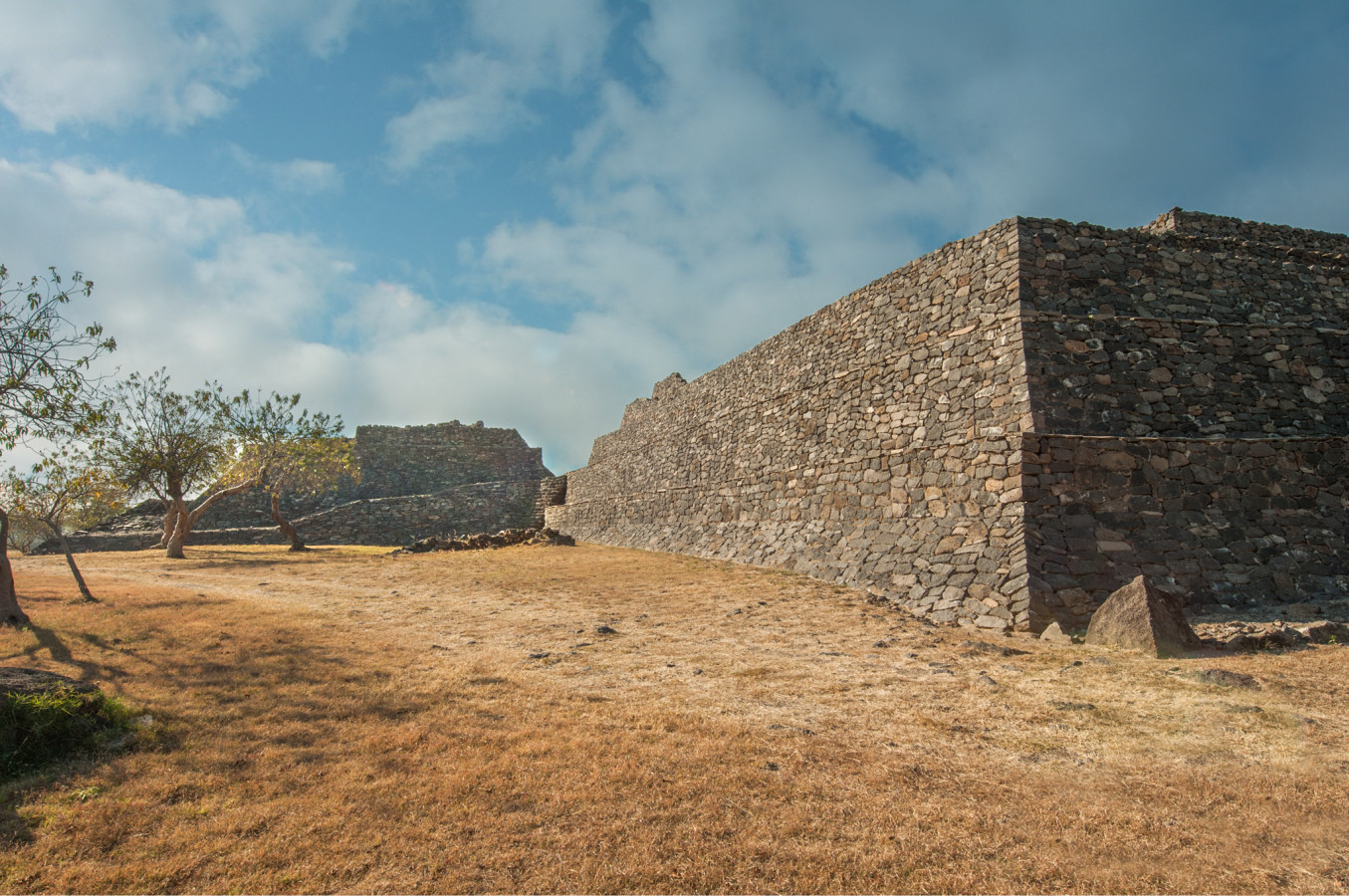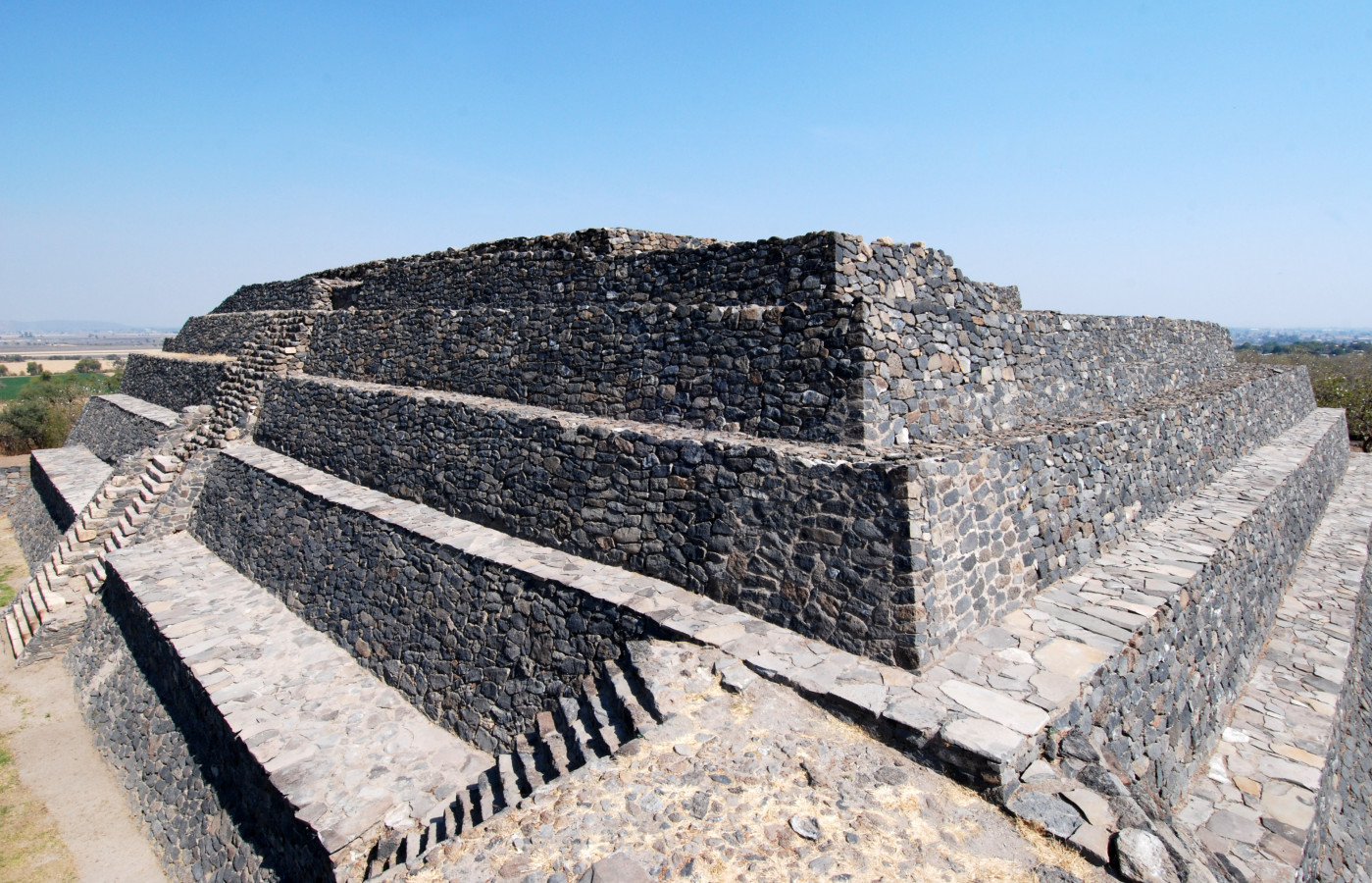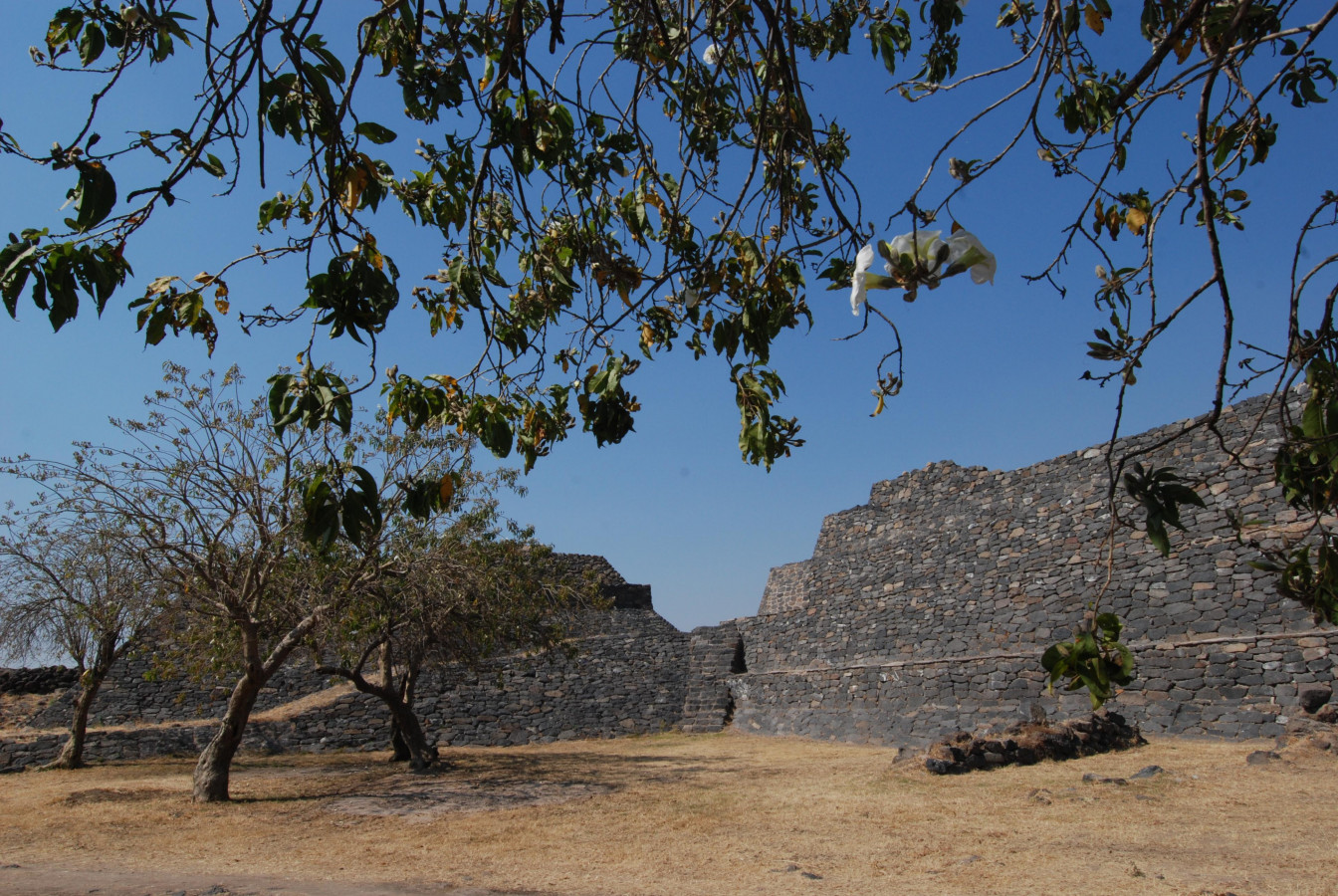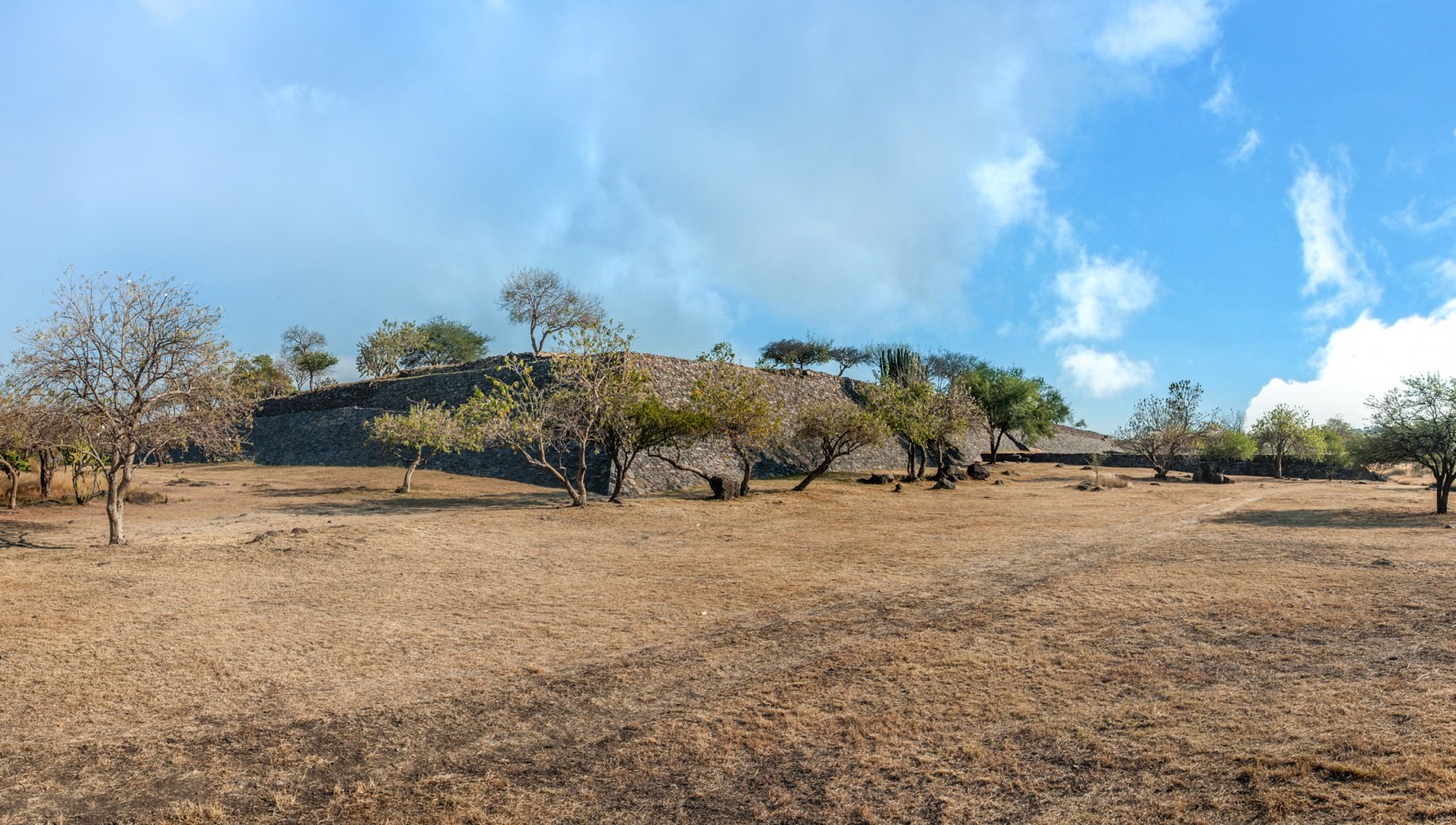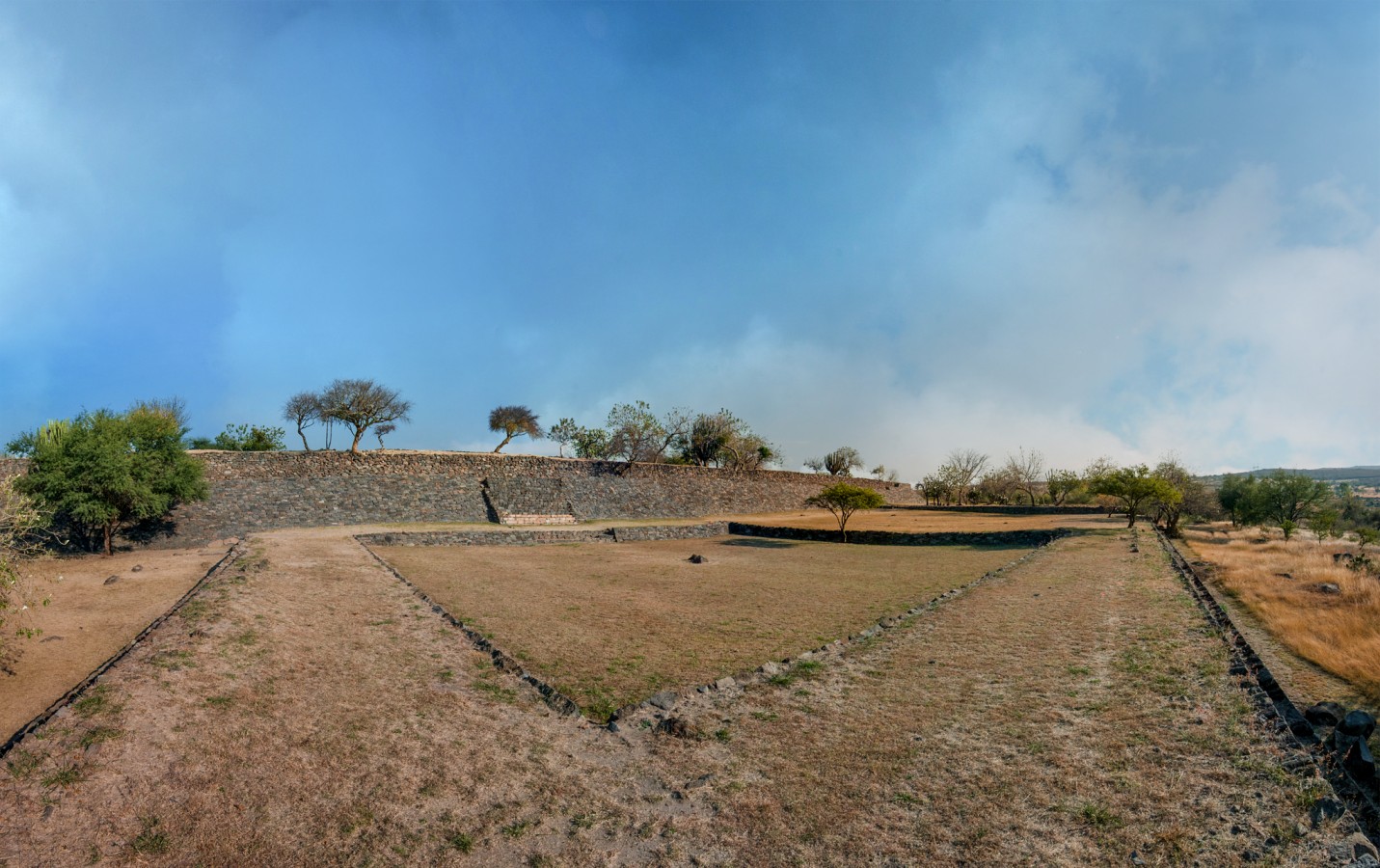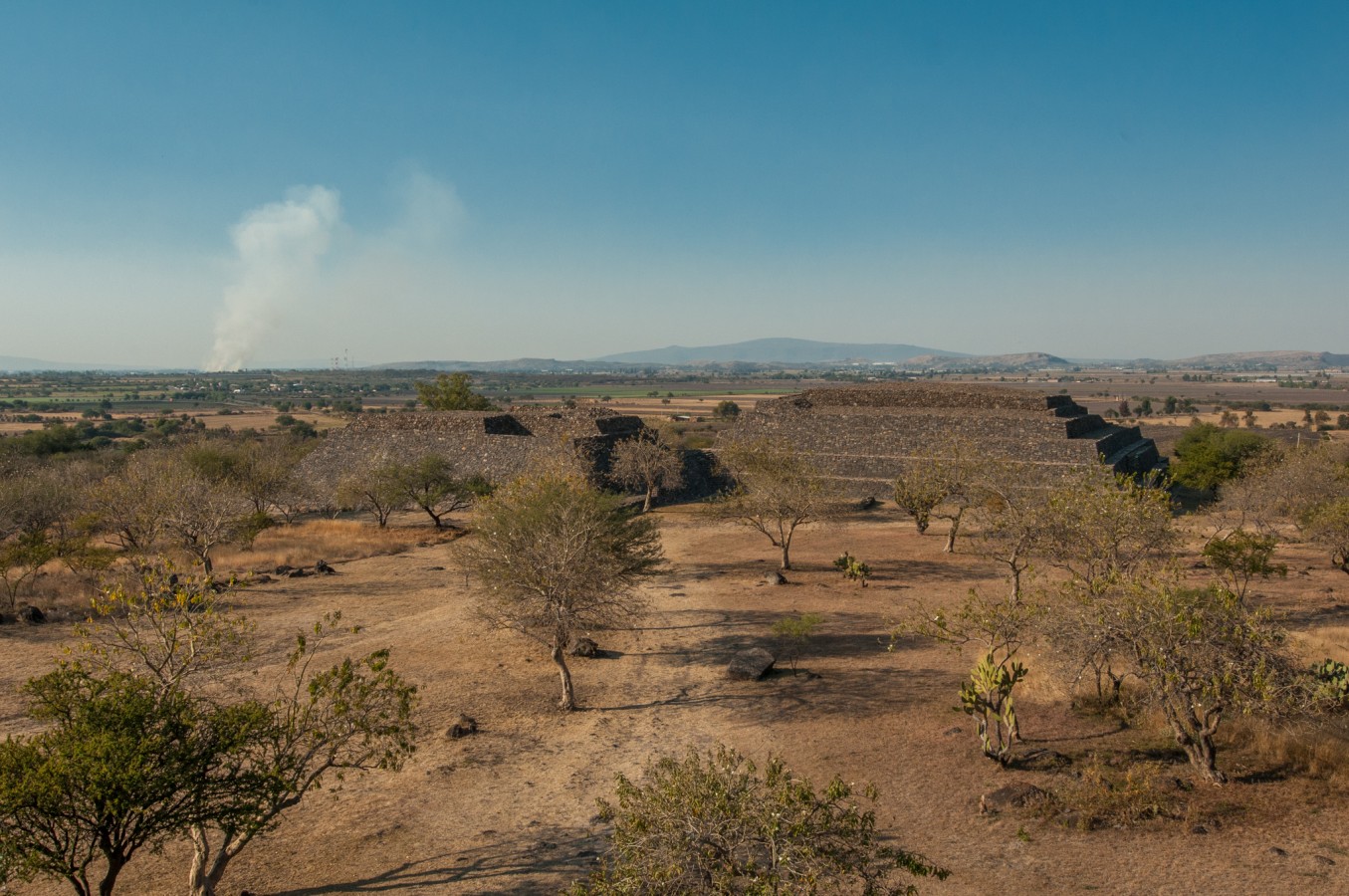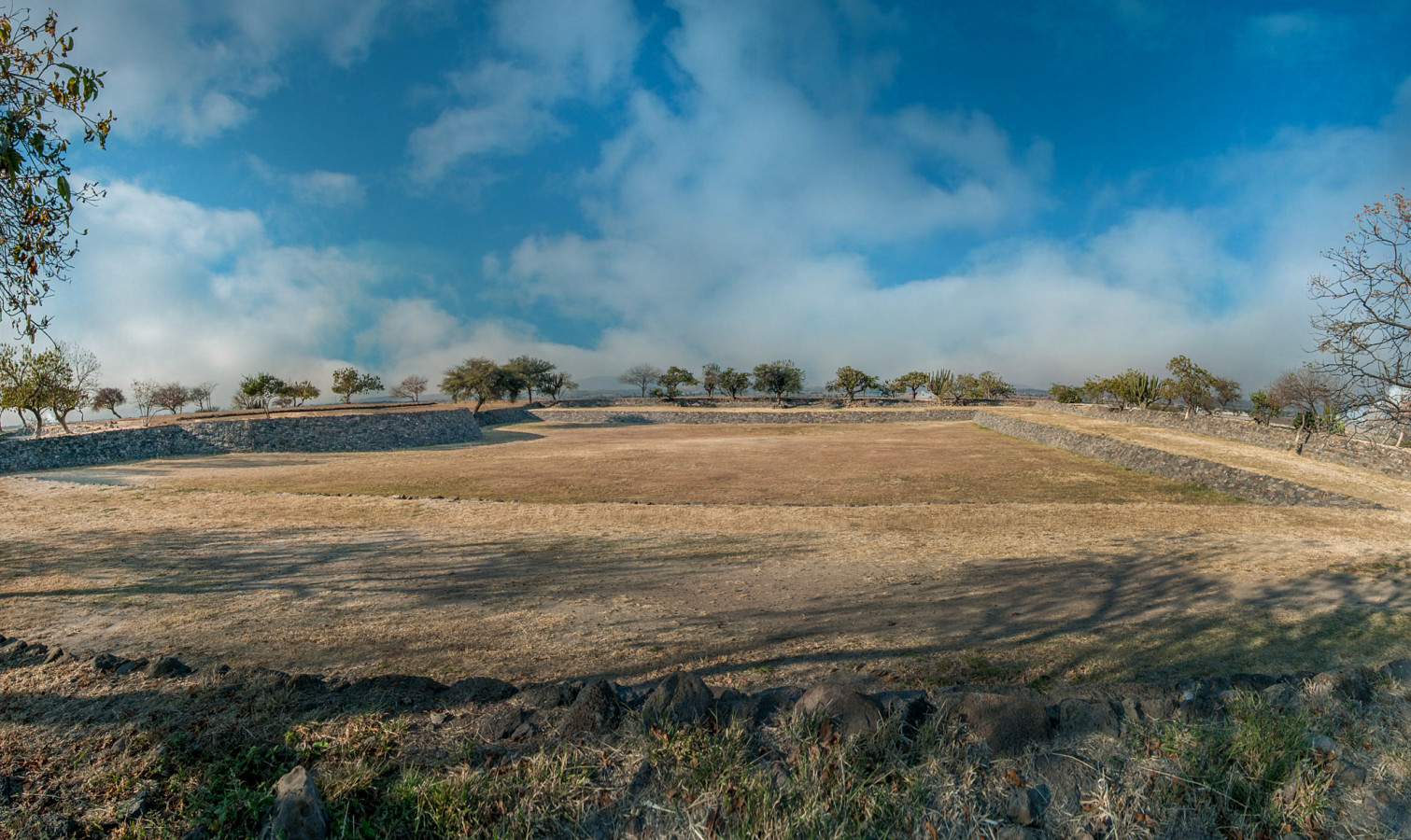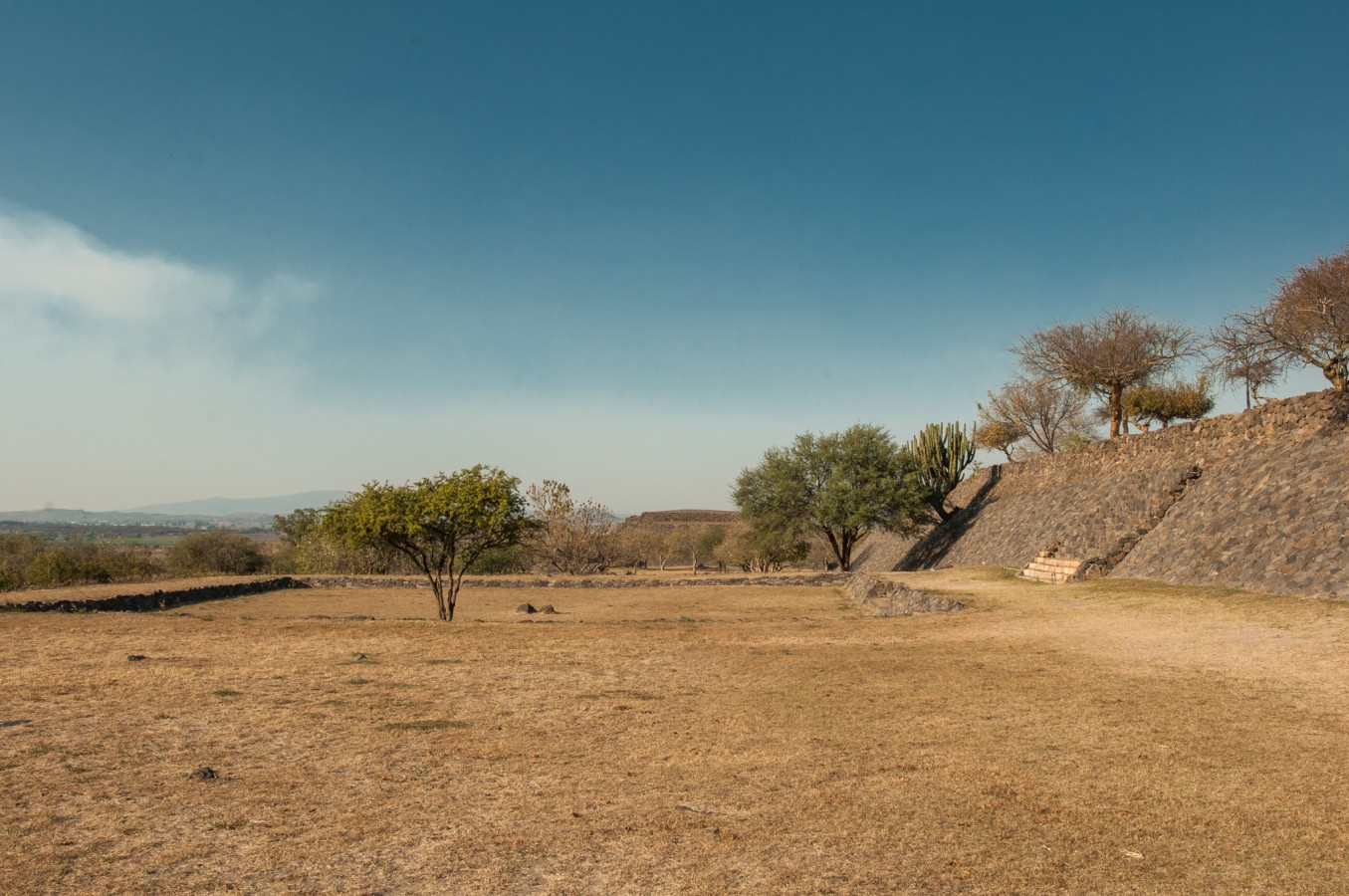Peralta
One of the largest sites in the Bajío region (330-750 AD), there is still a mystery about the ethnic origin of the people who inhabited it. The magnificent architecture is monumental, suggesting a ceremonial center.
About the site
This site, which is dispersed across the foothills of the Peralta mountain and the banks of the Lerma River, stood out in the pre-Hispanic era due to its agriculture. The land around the site and the traces of hundreds of terraces on the northern hillside of the mountain which gives the site its name are manifestations of this activity. Furthermore, its proximity to the Lerma suggests that a large amount of lake resources would have been available, supplementing the diet of the former inhabitants. Deposits of obsidian and rhyolite in the nearby mountains of Pénjamo and Abasolo are also thought to have contributed to the development of these groups. The area reached its peak between the years 300 and 650 AD.
Peralta has more than 20 groups of structures. However, in the central area, El Divisadero (“The Lookout Point”) and La Mesita (“The Little Table”) stand out; both have been fully excavated. El Divisadero comprises a plaza which is marked out by two temples and a pathway leading to rooms. Remains of adobe walls can be seen above the foundations, whilst the closed square created an enclosed setting for ceremonial and ritual activities.
La Mesita, whose foundations measure almost 500 feet on each side, contains various architectural elements inside. The central courtyard is one example, where hundreds of people could come together, as well as a structure with a circular base, a tradition from outside the Bajío region. Interestingly, this feature is more closely linked to sites in the present-day state of Jalisco. Another architectural element worth mentioning is the rooms along the interior pathways on the northern and eastern sides of the structure, which functioned as residences for elite groups and, possibly, as storage areas.
The Cerrito de Celestino and Yóstiro archeological remains are also part of the site, but they are now embedded within the modern urban area and are not open to visitors. The domestic area is situated on the Peralta mountain, however, and is where daily work practices were carried out. These ruined complexes all stand on smaller plinths and have been given names such as La Joyita (“The Little Gem”), La Crucita (“The Little Cross”), El Fraile (“The Friar”), Los Nogales (“The Walnuts”), Los Corrales (“The Stockyards”), and La Tinaja (“The Clay Pot”).
In 2002, the INAH entrusted the archeological work in Peralta to Efraín Cárdenas García, who took on responsibility for extensively excavating and restoring the two main sites and opening them to the public in 2008. His investigation also intended to analyse Peralta’s location in relation to its neighbouring sites, both on a small scale and larger regional scale. He further sought to study the construction system, building use, the definition of the settlement pattern and record of the local variants within a regional context. He also studied the site’s flora and fauna.
In the archeological site’s museum it is possible to view objects which mark out Peralta as a society which actively participated in the exchange of goods with other groups from both near and far.
Peralta has more than 20 groups of structures. However, in the central area, El Divisadero (“The Lookout Point”) and La Mesita (“The Little Table”) stand out; both have been fully excavated. El Divisadero comprises a plaza which is marked out by two temples and a pathway leading to rooms. Remains of adobe walls can be seen above the foundations, whilst the closed square created an enclosed setting for ceremonial and ritual activities.
La Mesita, whose foundations measure almost 500 feet on each side, contains various architectural elements inside. The central courtyard is one example, where hundreds of people could come together, as well as a structure with a circular base, a tradition from outside the Bajío region. Interestingly, this feature is more closely linked to sites in the present-day state of Jalisco. Another architectural element worth mentioning is the rooms along the interior pathways on the northern and eastern sides of the structure, which functioned as residences for elite groups and, possibly, as storage areas.
The Cerrito de Celestino and Yóstiro archeological remains are also part of the site, but they are now embedded within the modern urban area and are not open to visitors. The domestic area is situated on the Peralta mountain, however, and is where daily work practices were carried out. These ruined complexes all stand on smaller plinths and have been given names such as La Joyita (“The Little Gem”), La Crucita (“The Little Cross”), El Fraile (“The Friar”), Los Nogales (“The Walnuts”), Los Corrales (“The Stockyards”), and La Tinaja (“The Clay Pot”).
In 2002, the INAH entrusted the archeological work in Peralta to Efraín Cárdenas García, who took on responsibility for extensively excavating and restoring the two main sites and opening them to the public in 2008. His investigation also intended to analyse Peralta’s location in relation to its neighbouring sites, both on a small scale and larger regional scale. He further sought to study the construction system, building use, the definition of the settlement pattern and record of the local variants within a regional context. He also studied the site’s flora and fauna.
In the archeological site’s museum it is possible to view objects which mark out Peralta as a society which actively participated in the exchange of goods with other groups from both near and far.
Map
Did you know...
- It is one of the largest archeological sites in the present-day state of Guanajuato.
- The top of the pyramidal plinths can be accessed via a large staircase of which only the first steps remain on the building facades facing the square.
- The majority of the buildings have a dry core made from black basalt, and are clad in the same material, bonded together with clay and vegetable fibres.
An expert point of view
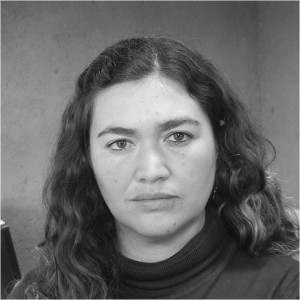
Martha Ruth Ortega Rivera
Centro INAH Guanajuato
Practical information
Temporarily closed
Tuesday to Sunday from 10:00 to 17:00 hrs. Last entry 16:00 hrs. Maximum capacity 15 people every 30 min.
Se localiza al oriente del municipio de Abasolo, en la región suroeste del estado de Guanajuato.
Services
-
+52 (473) 733 1069
-
This email address is being protected from spambots. You need JavaScript enabled to view it.
Directory
Responsable
Centro INAH Guanajuato
This email address is being protected from spambots. You need JavaScript enabled to view it.
+52 (473) 733 1069

